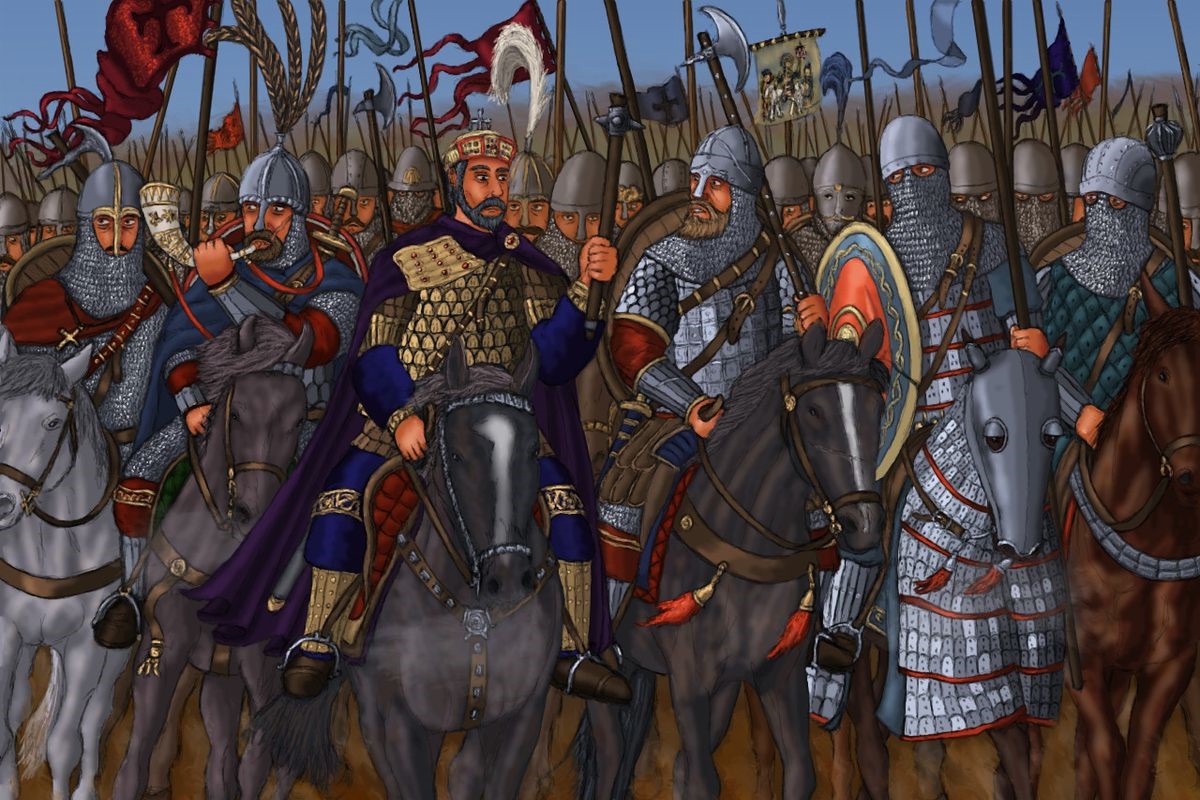
What was the Paphlagonian Expedition of the Rus'? The Paphlagonian Expedition of the Rus' was a daring raid by the Rus' people, who were Norsemen that settled in Eastern Europe, during the 10th century. They targeted the Byzantine Empire's northern territories, specifically the region of Paphlagonia, which is in modern-day Turkey. This expedition is a fascinating blend of Viking audacity and Byzantine resilience. The Rus' aimed to plunder and establish their dominance, but they faced formidable resistance from the Byzantine forces. This clash is a testament to the turbulent relations between the two powers and showcases the adventurous spirit of the Rus'. Want to know more about this thrilling historical event? Keep reading!
Key Takeaways:
- The Paphlagonian Expedition of the Rus' was a daring adventure by Norse warriors in the 10th century, showcasing their seafaring skills and military tactics in battles with the Byzantine Empire.
- Despite facing resistance and logistical challenges, the Rus' left a lasting impact on trade relations and military strategies, shaping their reputation as formidable warriors and influencing future historical events.
The Paphlagonian Expedition of the Rus'
The Paphlagonian Expedition of the Rus' is a fascinating chapter in medieval history. This event, involving the Rus' people, showcases their adventurous spirit and military prowess. Here are some intriguing facts about this expedition.
Historical Context
Understanding the background helps appreciate the significance of the expedition.
-
The Rus' were a group of Norse traders and warriors who ventured into Eastern Europe.
Originating from Scandinavia, they traveled through rivers and established trade routes, eventually forming the Kievan Rus' state. -
Paphlagonia was an ancient region on the northern coast of Asia Minor.
Located in modern-day Turkey, it was known for its strategic importance and rich resources. -
The expedition took place in the 10th century.
This period was marked by frequent conflicts and power struggles in the Byzantine Empire and surrounding regions.
The Expedition's Journey
The route and experiences of the Rus' during their expedition are noteworthy.
-
The Rus' traveled by both land and sea.
They navigated through rivers and the Black Sea, showcasing their impressive seafaring skills. -
They encountered various Byzantine territories.
As they moved through these lands, they faced resistance and engaged in battles with local forces. -
The expedition aimed to raid and plunder.
The primary goal was to acquire wealth and resources, which were abundant in the Byzantine territories.
Key Figures
Several notable individuals played crucial roles in the expedition.
-
Prince Igor of Kiev led the Rus' forces.
As a prominent leader, he commanded respect and loyalty from his warriors. -
The Byzantine Emperor Romanos I Lekapenos was a key opponent.
He organized defenses and strategies to counter the Rus' invasion. -
Varangian mercenaries were part of the Rus' forces.
These Norse warriors were known for their combat skills and often served as mercenaries in various armies.
Battles and Conflicts
The expedition was marked by numerous skirmishes and battles.
-
The Battle of Paphlagonia was a significant conflict.
This battle saw intense fighting between the Rus' and Byzantine forces, with heavy casualties on both sides. -
The Rus' employed guerrilla tactics.
They used surprise attacks and ambushes to gain an advantage over the better-equipped Byzantine troops. -
Byzantine fortifications posed challenges.
The well-defended cities and forts made it difficult for the Rus' to achieve quick victories.
Aftermath and Impact
The expedition had lasting effects on both the Rus' and Byzantine territories.
-
The Rus' eventually retreated.
Despite initial successes, they faced strong resistance and logistical challenges, leading to their withdrawal. -
The expedition strained Byzantine resources.
Defending against the Rus' incursions required significant military and financial efforts. -
Trade relations were affected.
The conflict disrupted trade routes, impacting economic exchanges between the regions.
Cultural and Historical Significance
The expedition left a mark on the cultural and historical landscape.
-
The Rus' gained a reputation as formidable warriors.
Their daring raids and military prowess were remembered and feared by their contemporaries. -
Byzantine chroniclers documented the events.
These records provide valuable insights into the expedition and the interactions between the Rus' and Byzantines. -
The expedition influenced future Rus' military strategies.
Lessons learned from this campaign were applied in subsequent conflicts and raids. -
It highlighted the strategic importance of Paphlagonia.
The region's resources and location made it a target for future military campaigns. -
The expedition is a subject of historical research and interest.
Scholars continue to study and analyze the events, shedding light on this intriguing period of history.
Final Thoughts on the Paphlagonian Expedition
The Paphlagonian Expedition of the Rus' stands as a fascinating chapter in medieval history. This event, marked by the daring raids of the Rus' Vikings along the Byzantine coast, showcases the complex interactions between different cultures and empires. It highlights the strategic importance of the Black Sea region and the resilience of the Byzantine Empire in defending its territories.
Understanding this expedition provides valuable insights into the military tactics, trade routes, and diplomatic relations of the time. It also underscores the adventurous spirit of the Rus' people and their quest for wealth and influence.
By delving into these historical facts, we gain a deeper appreciation for the intricate tapestry of human history. The Paphlagonian Expedition reminds us of the ever-changing dynamics of power and the enduring legacy of those who dared to challenge the status quo.
Frequently Asked Questions
Was this page helpful?
Our commitment to delivering trustworthy and engaging content is at the heart of what we do. Each fact on our site is contributed by real users like you, bringing a wealth of diverse insights and information. To ensure the highest standards of accuracy and reliability, our dedicated editors meticulously review each submission. This process guarantees that the facts we share are not only fascinating but also credible. Trust in our commitment to quality and authenticity as you explore and learn with us.
